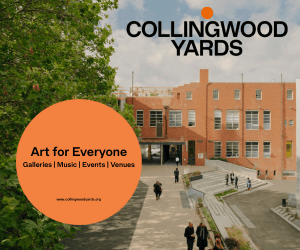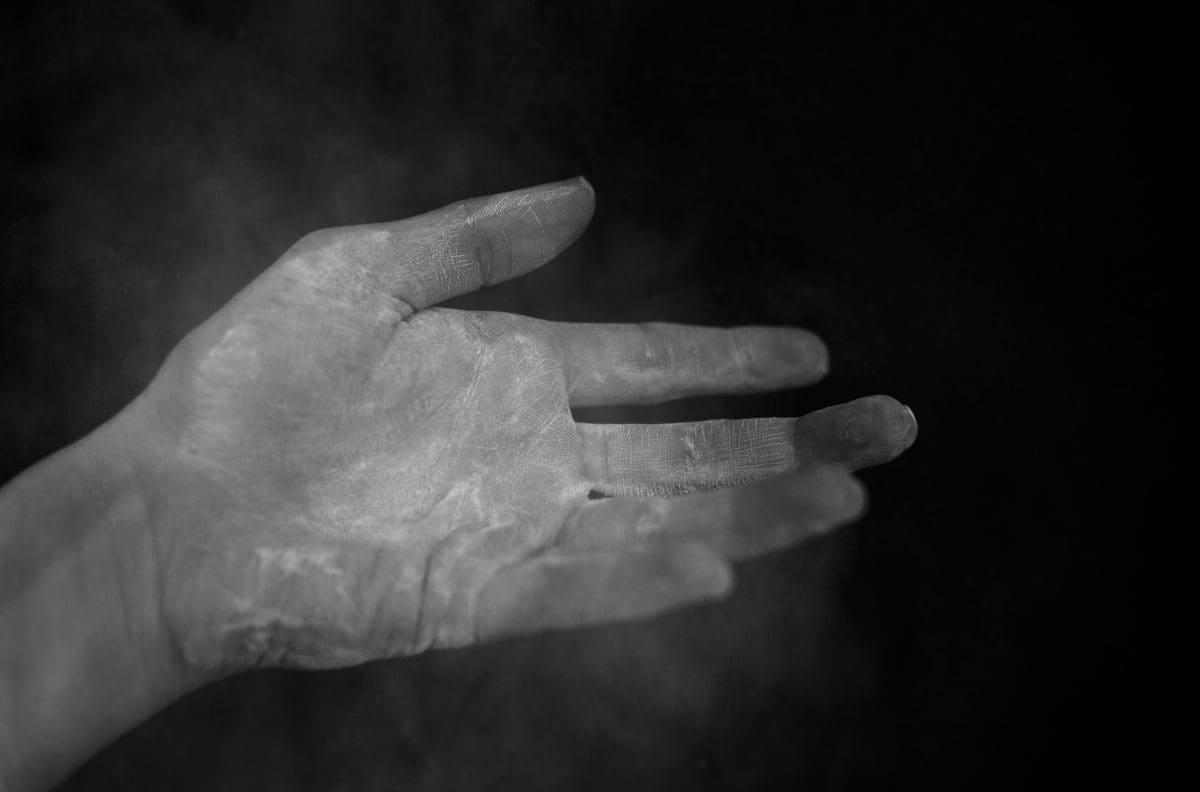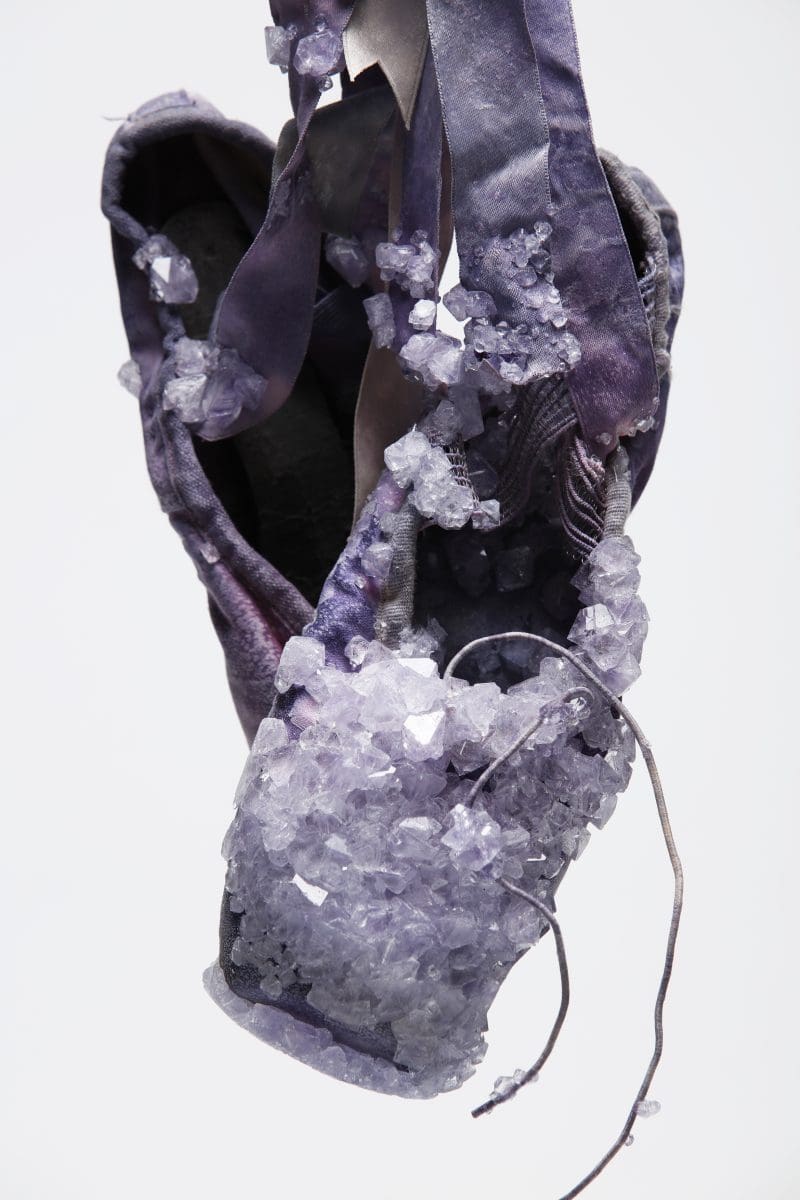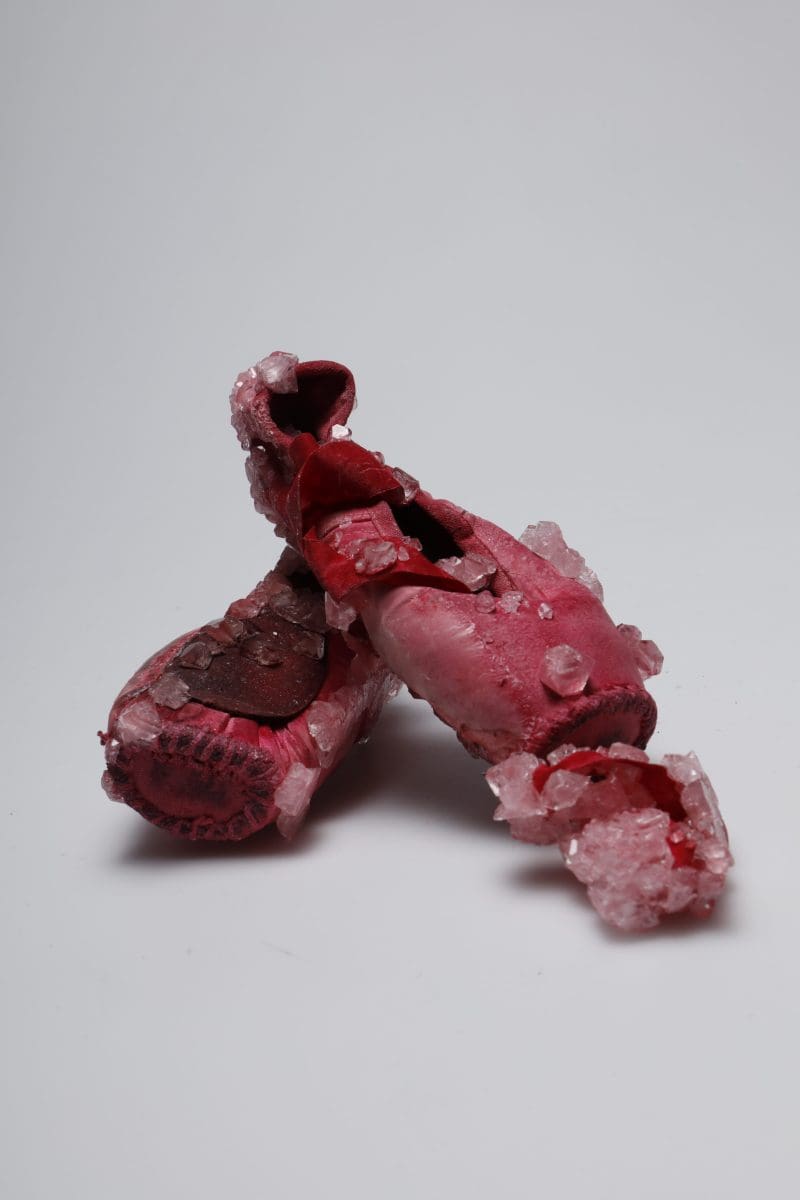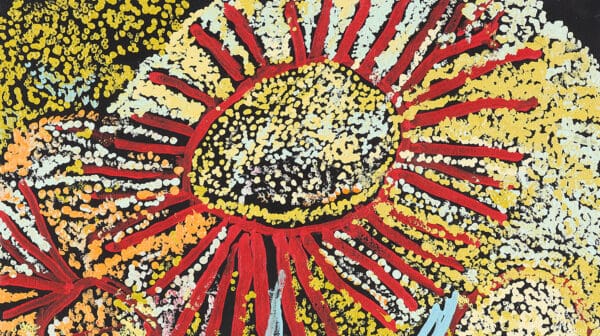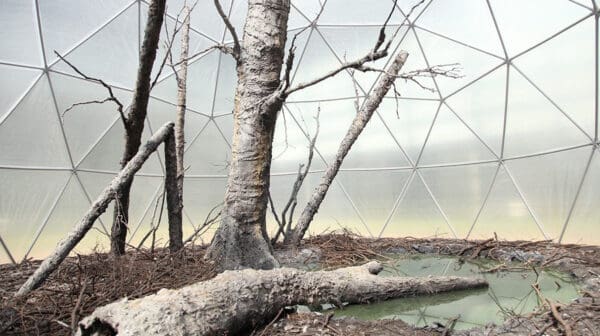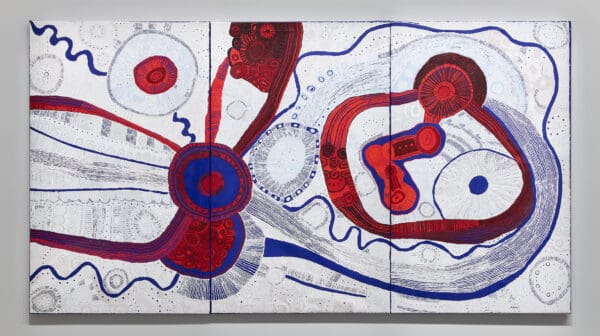Curated by Claire Beale for Design Tasmania, Body Future opened in conjunction with the 2020 Mona Foma festival. Going with the vibe of artistic experimentation that comes with a festival like Mona Foma, Beale cast a wide net to find designers working in boundary pushing ways. Global resources for food and clothing becoming increasingly difficult to maintain. So sustainability and responsible methods of production are, and will continue to remain, a high priority. With the current rapid turnover of fast fashion, this is especially true for the fashion and design industries. When considering how we might sustainably dress and undress our bodies in the future, Beale found that designers Alice Potts and Tarryn Handcock had some unconventional solutions involving human sweat and dust.
UK-based fashion designer and researcher Alice Potts uses human sweat to grow alternative materials made from recycled biological matter. Working with professional athletes and dancers, for Body Future Potts has created a collection of what initially appear to be rainbow coloured chunks of crystal but are in fact, sweat encrusted ballet shoes and innersoles. To make these pieces Potts extracted compounds from sweat embedded in each piece of footwear and clothing before ‘replanting’ them back on to the original garment. “This is key as the individual has unique molecules specific to them,” she says. “By growing the processed sweat back on to the person’s own sweaty object, it acts as a seed allowing the crystals to grow from within the fibres.”
Also making use of a material more often discarded than treasured, Tarryn Handcock works out of RMIT’s School of Fashion and Textiles and researches the potential of dust as an archival tool for measuring how the body interacts with its environment. Coming from a background in fashion and jewellery design, in Body Future Handcock presents her ongoing Dust Project, a series of photographs and small unassuming archive boxes. Labelled with descriptions of locations and dates, the final forms of Handcock’s boxes actually contain petri dishes filled with dust samples collected from varied locations, from living rooms to factory floors and museums.
Most dust samples are made up of 90% human dander. So when analysed dust reveals detailed information about the objects we use and the life we lead.
“Collections of dust can include the hair of our pets, textiles in our homes, the dusts we track in from the street, which then might contain traces of things like the modes of transport we use and the materials our roads are made from,” says Handcock. “As we study dust, we soon start to see we have this very material record of a specific time in history, of what life was like, as documented through the materials we use and how the body extends into the environment around us.”
A speculative glimpse into how we might use substances extracted from our own bodies as everyday materials and archival tools, Body Future is a forward-thinking exhibition that asks the viewer to consider the impact of our bodies on the environment and how we can use its waste to create something useful and sustainable. “It’s connected back to this idea of Body Future not just being about how we design with bodies, but about how our bodies are starting to design and be a part of the world around us too,” says Handcock. As Potts puts it, “I still believe our bodies are our greatest technologies. Without science we would not understand the body, without the body fashion would not become alive and without art, how can we express the bodies we have?”
Body Future
Alice Potts and Tarryn Handcock
Design Tasmania
15 January – 1 March


